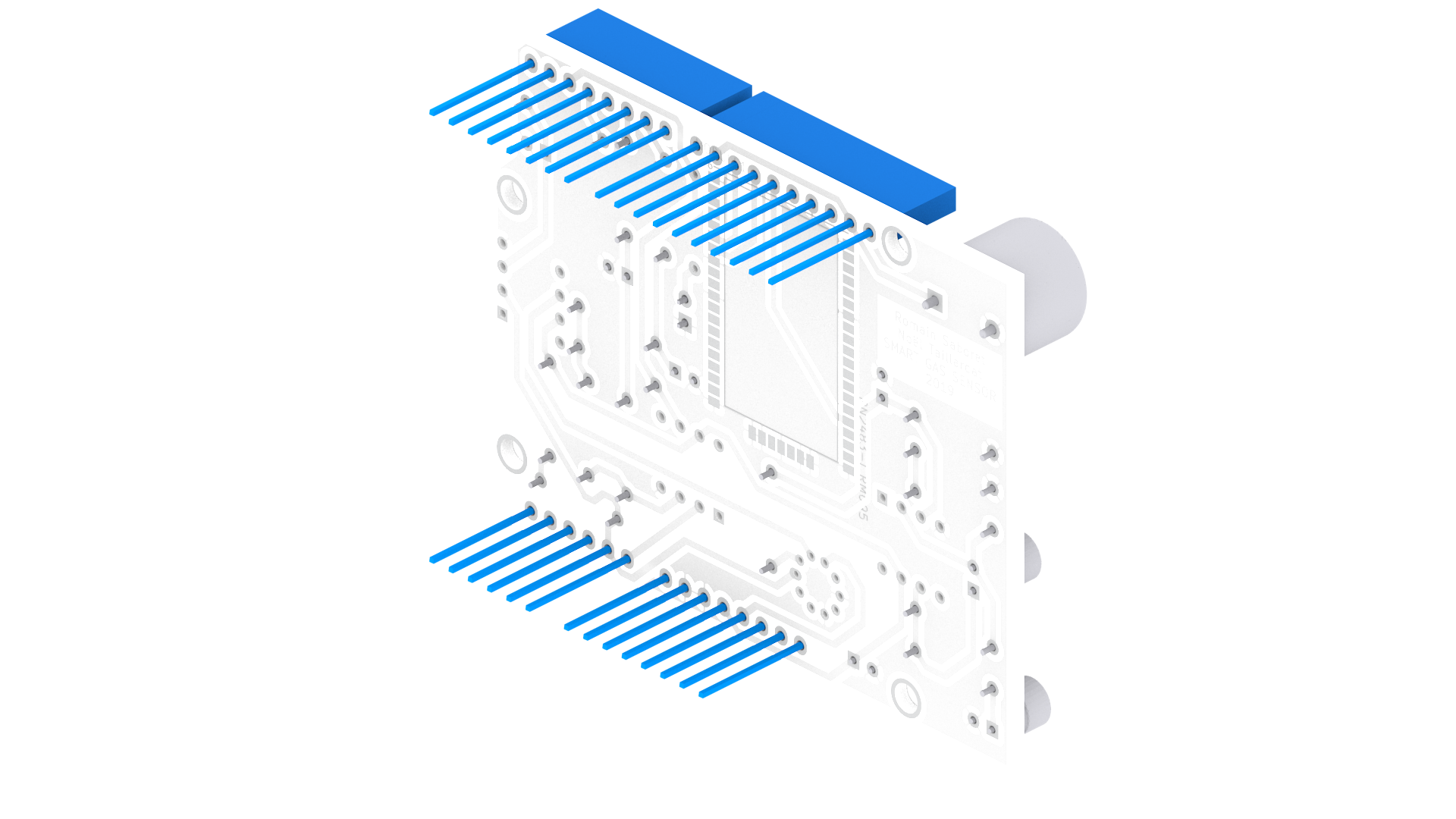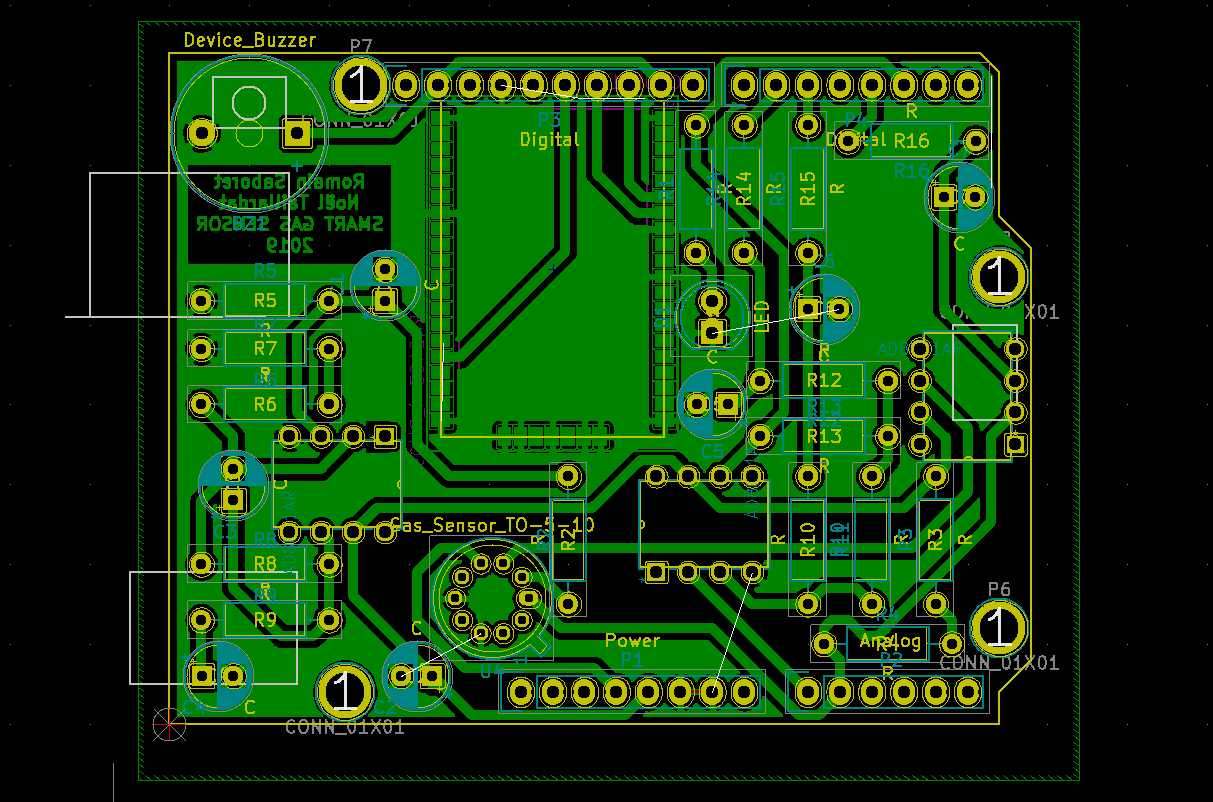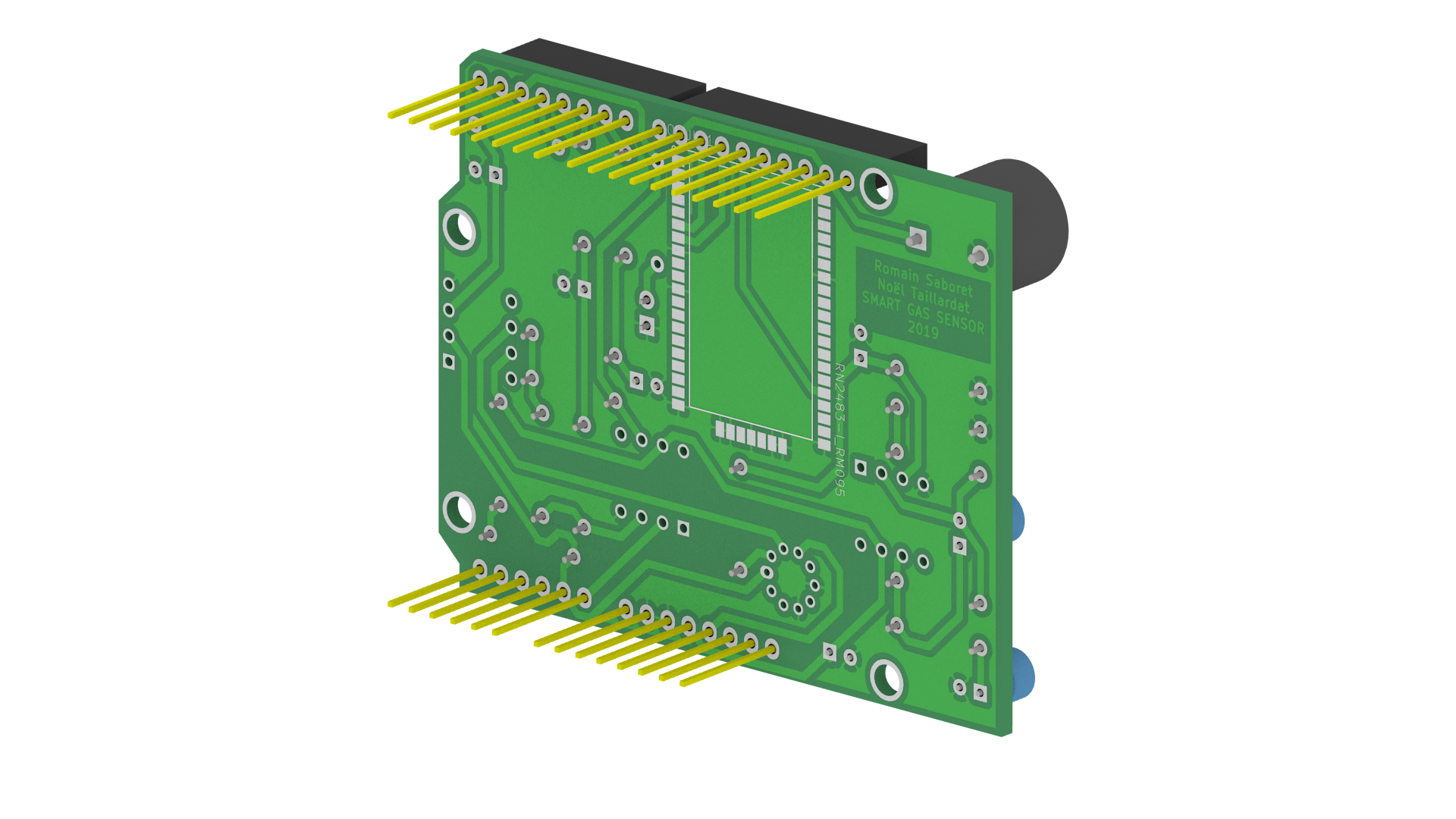On this github, you will find KiCad files to print your PCB and Arduino files to upload code to use the shield.
- Gas sensor + Electrical noise reduction + Temperature setting
- Warning trigger + visual warning
- LoRa communication + TTN connection
- Buzzer can be activated
Gas sensor made at the AIME whiteroom of Toulouse.
On the shield, filters are made to reduce the electrical noise. There is a passive filter to cancel HF noise at the start of the circuit. An active filter with an Op-Amp is on to be more efficient. The gain can be modified with the potentiometer named PT1. A passive filter at the end of the circuit is used to filter noise induced by the circuit.
The temperature can be set to improve gas recognition with Gas_Temp_Target. The feedback loop gain can be modified with the PT2 potentiometer.
You will find as well ttn_script.js to use on the TheThingsNetwork console to decrypt the data.
The Arduino code needs to be updated with your app and network session key foundable on the TTN console. The activation method needs to be set to ABP.
The warning can be set with Gas_Trigger_Offset to set the estimated thresold value.
An hysteresis has been made to be sure that the warning do not go on and on multiple times. This can be set with Gas_Trigger_Diff. In case of limited amplitude of the hysteresis, the potentiometers PT3 and PT4 can be changed to adapt it to your use.
A LED on board have visual indication of the warning
A buzzer can be activated with a analogWrite command.
A usage would be to set it to ring when the warning goes on, or when the warning is on. Another can be to ring when the LoRa connection fails.
Below is the schematic of our shield, including all the features explained above.
From there, the routing of our shield is achieved as shown below:
Here, a 3D view (from Blender) of the shield:



